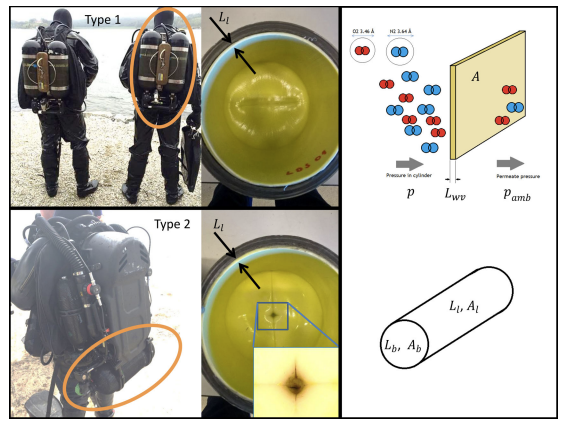
Permeability properties of a pressure induced compacted polymer liner in gas cylinder
- Post by: Tobias Larsson
- 11th March 2021
- No Comment
The permeability properties of composite gas cylinders for breathing gas with polymer inner-liner are investigated. The cylinder wall can be described as a composite membrane consisting of two layers. The permeability properties of the cylinder are presented as permeability coefficient and permselectivity. Deviation from the expected gas components might lead to incidents and potentially harmful situations when breathing gas from a compressed gas cylinder. Hence, gas permeability and potential changes in gas composition, must be considered when choosing cylinder materials. Cases of decompression sickness initiated this study. Experimental data show that pressure and oxygen fraction in the gas cylinder drops and that the permeability coefficient varies depending on the inner pressure. Permeability coefficients of 0.62–0.90 Barrer for oxygen and 0.44–0.56 Barrer for nitrogen are measured. Cracks in the inner-liner have caused an accentuated drop in of oxygen fraction and pressure.
Keywords
composites, copolymers, theory and modeling, thermoplastics
Citation
Silvanius M, Frånberg O. Permeability properties of a pressure induced compacted polymer liner in gas cylinder. J Appl Polym Sci. 2020;e50335. https://doi.org/10.1002/app.50335
